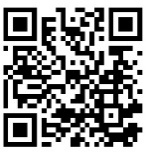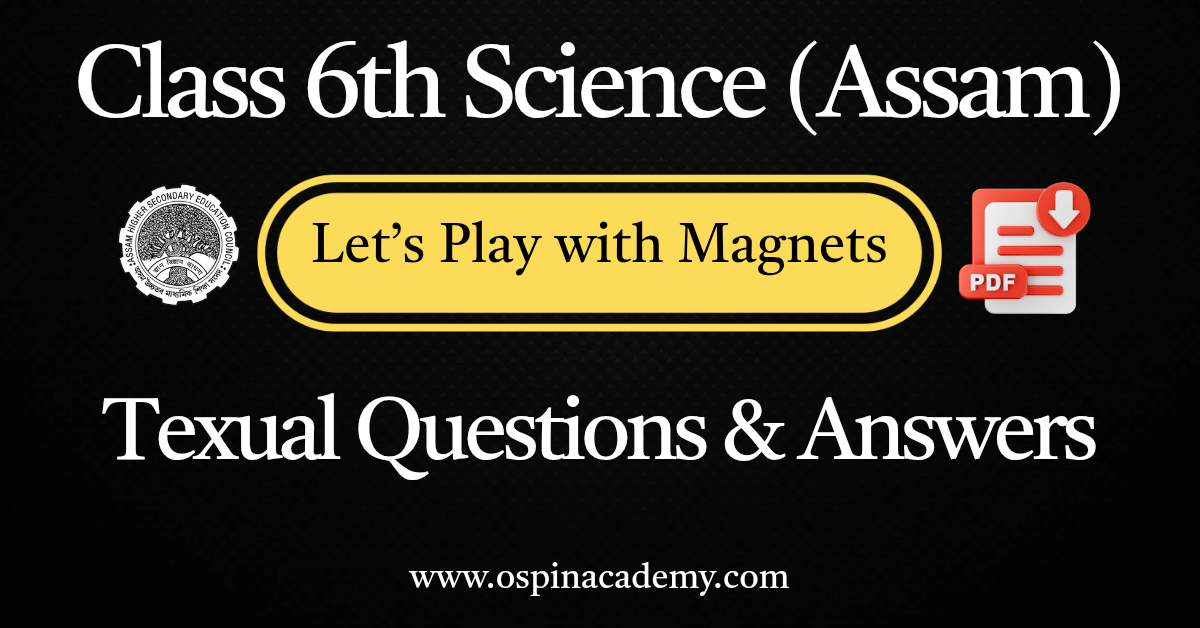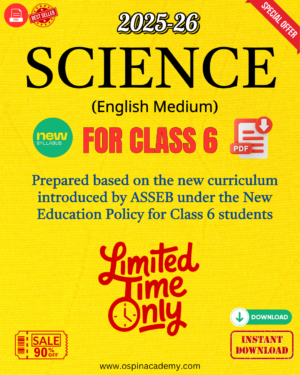Uncover the fascinating world of magnetism with Class 6 *Amar Bigyan* Chapter 4 – Let’s Play with Magnets, designed as per the new SCERT Assam syllabus 2025-26 for English Medium students. This chapter introduces students to the properties of magnets, their uses, and the science behind magnetic forces. Aligned with the updated Assam board curriculum, it encourages hands-on exploration and curiosity-driven learning, making science fun and interactive for young learners.
The new syllabus 2025-26 emphasizes experiential and inquiry-based learning, and this chapter perfectly blends theory with practical activities. Students will explore how magnets attract and repel, the types of magnets, and their real-world applications. From understanding magnetic poles to experimenting with magnetic materials, this chapter fosters a deeper understanding of physical science. Scan the QR code J1M6K9 to access interactive resources and enhance your learning experience as per the SCERT Assam English Medium curriculum.
✅ What You’ll Learn in Chapter 4:
- Introduction to magnets and their properties in the new SCERT Assam syllabus
- Types of magnets: bar magnets, horseshoe magnets, and electromagnets
- Concepts of magnetic poles: attraction and repulsion
- Identification of magnetic and non-magnetic materials
- Uses of magnets in everyday life, from compasses to technology
- Simple experiments to explore magnetic properties
- Role of magnetism in scientific discoveries and innovations
- Inquiry-based activities to foster critical thinking, as per the 2025-26 curriculum
- Practical applications of magnets in Assam and beyond
🎯 Why Choose Ospin Academy for Class 6 Amar Bigyan?
- 100% aligned with the SCERT Assam English Medium new syllabus 2025-26
- Clear, concise explanations, accurate Q&A, and exam-ready notes
- Ideal for Assam board students preparing for the updated curriculum
- Engaging video lessons available on Ospin Academy’s YouTube channel
- Downloadable resources, including chapter notes, MCQs, and QR code J1M6K9 content
- Focus on conceptual clarity and practical applications as per new syllabus guidelines
With the new SCERT Assam syllabus 2025-26, learning about magnets is both exciting and educational! Ospin Academy’s resources make Chapter 4 – Let’s Play with Magnets engaging, accessible, and easy to master. Use the QR code J1M6K9 to unlock additional study materials and join Ospin Academy to excel in the updated Class 6 Amar Bigyan curriculum while discovering the wonders of magnetism!
SCERT Assam Class 6 Science (Amar Bijnan) – English Medium Chapter-wise Solutions PDF
Special Combo Offer!
(For SCERT Assam Class 6, 2025)
Get complete chapter-wise Science (Amar Bijnan) solutions in English Medium prepared by expert teachers.
Covers all textbook exercises, key concepts, definitions, and diagrams as per the latest SCERT Assam syllabus.
Ideal for concept clarity, homework assistance, and exam preparation.

Class 6th Science
LET’S PLAY WITH MAGNETS
Exercise
Q.1. Fill in the blanks
(a) Materials that are attracted by magnet are called_____
Answer: Magnetic substances
(b) Magnets made artificially for various purposes are called_____. magnet.
Answer: artificial
(c) Rubber is not a ______.substance.
Answer: Magnetic
(d) If we break a bar magnet equally into two pieces, we will get_______magnets.
Answer: two
(e) Similar poles of two magnets ______each other.
Answer: repulsion
(f) Magnets always have_____poles.
Answer: two
Q.2. Put fick mark (✔) for correct statement.
(a) Magnets attract all kinds of objects.
Answer:(×)
(b) There is attraction between the opposite ends of a magnet.
Answer:(✔)
(c) Cobalt is a magnetic substance.
Answer:(✔)
(d) The bar magnet always remains facing in north south diréc-tion.
Answer:(✔)
(e) Magnets lose their magnetic propertics when heated.
Answer:(✔)
Q.3. Match column A with column B
|
Column A in |
Column B (‘ |
|
1. Compass |
(a) The first magnet discovered |
|
2. Iron nails |
(b) The magnetic property remains for a long time |
|
3. Magnetite |
(c) Is attracted by a magnet |
|
4. Permanent magnet |
(d) At steady state, it remains in north-south direction. |
Answer:
|
Column A in |
Column B |
|
1. Compass |
(d) At steady state, it remains in north-south direction. |
|
2. Iron nails |
(c) Is attracted by a magnet |
|
3. Magnetite |
(a) The first magnet discovered. |
|
4. Permanent magnet |
(b) The magnetic property remains for a long time |
Q.4. Column-1 shows the position of one end of the mgnet. Col-umn-2. Shows the action in each case. Now fill in the blanks
Answer:
|
Column-1 |
Column-2 |
|
North-North |
Repulsion |
|
North-South |
attraction |
|
South-North |
attraction |
|
South-South |
repulsion |
Q.5. Darken the circle of correct answer.
1. Which of the following is a magnetic substnce?
(a) Alpin
(b) Rubber
(c) Plastic bangle
(d) Wooden scale
Answer:(a)
(ii) Which of the following is a non-magnetic substance?
(a) Iron nail
(b) Rubber band
(c) Safety pin
(d) Alpin
Answer:(b)
(iii) How many poles are there in a magnet? (
(a) Two
(b) One
(c) Three
(d) Four
Answer:(a)
Q.6. If a bar magnet is brought near to iron powder, in which part of the magnet will the iron powder stick least.
Answer: In the middle part of the magnet will the iron powder very less.
Q.7. The poles of a bar magnet are not marked. How do you find out its north pole?
Answer: A freely suspended magnet always aligns in particular direc-tion. This is the north-south direction. The end pointing towards north is the north pole of the magnet and the south pointing end is the south pole.
Q.8. Can we get a magnet with unit pole?
Answer: No, we cannot get a magnet with unit pole.
Q.9. Write down any two propertics of magnet
Answer:
(i) Every magnet has two poles – The north pole and the south pole.
(ii) The magnets are attracted by opposite poles and repelled by the same pole.
Q.10. How do you convert an iron nail into a magnet?
Answer: For the experiment we need a bar magnet, a iron nail and iron powder. At first place the iron nail on a wooden table. Place any one pole of the magnet on one end of the iron nail. Then rub the magnet over the iron nail to the other end. Lift the magnet and rub the iron nail from the same end to the other end as before. Rub the iron nail 30-40 times from the same end. Don’t rub the opposite direction. Now bring a pin or iron filling near to the iron nail. The pin or iron powder sticks to the iron nail. In other words the iron nail attracts the pin. So the iron nail has become a magnet.
Q.11. Why does a bar magnet remain in north-south direction when suspended freely?Answer: A bar magnet remain in north-south direction when sus-pended freely because our Earth is like a huge bar magnet. This is called geomagnet, the southpole of the geomagnet indicates north while its north pole indicate south. So the magnet remains in the north-south direction.
Q.12. How is a compass used to determine direction?
Answer: A compass is a small box with a glass lid. It has a small needle-shaped magnet in the middle. This needle can rotate freely. We know that at steady state, the two ends of the magnet always points in the north-south direction. The north pole of the magnet is marked red. Thus from the needle of the compass we find north and south directons. This facilitates the determination of the other directions (east and west).
Q.13. How would you identify the two poles of a horseshoe magnet?
Answer: Take a horseshoe magnet, somė iron filing and a piece of white paper. Place the horseshoe magnet on the white paper andsprinkle a little iron filing. We will see more iron filing sticking to the ends of the horse shoe magnet but in the middle part of the magnet the amount of iron filing will be very less. The two ends of the horse-shoe magnet are called the poles of the magnet. One of these poles in north pole and the other is the south pole.
Q.14. You are given a bar magnet, a small plastic scale, a piece of wood, and a nail. Which of these can you convert into a magnet and how? How do you come to know that it becomes a magnet?
Answer: All of these materials we can convert only a nail into a mag-net. Because plastic scale, a piece of wood are non-magnetic materi-als, they are not attracted by magnet. A nail is a magnetic material so it attracted by magnet and we convert the nail into a magnet. We can determine if a nail has become magnetized by observing its ability to attract other magnetic materials like iron filing or other nails or by using a compass.
Q.15. You are given a bar magnet and some alpins. How do you determine the two poles of it?
Answer: To determine the north and south poles of a bar magnet us-ing a compass. Simply bring the magnet near the compass needle, the end of the magnet that repels the north end of the compass needle is the magnet’s north pole, and the opposite end is the south pole. Thus we can determine the two poles of a bar magnet.
Q.16. You are given a bar magnet and a compass. The poles are not marked on the magnet. How will you mark the poles of the magnet with the help of the compass?
Answer: To determine the north and south poles of a bar magnet us-ing a compass. Simply bring the magnet near the compass needle, the end of the magnet that repels the north end of the compass needle is the magnet’s north pole, and the opposite end is the south pole. Thus we can determine the two poles of a bar magnet.
Q.17. A needle made of steel falls on the floor, you cann’t lift it up with your hands. How can you lift the needle up?
Answer: We can lift the needle up from the floor, with the help of magnet. To pick up fallen needles from the floor use a strong magnet, such as a magnetic sweeper or a hand held magnet and collect the needles.
Q.18. Suppose you are visiting a new place. You have a com-pass with you. How will you determine the directions of the place? Answer: A compass has a small needle-shaped magnet in the middle. This needle can rotate freely. At steady state, two ends of the magnet always points in the north-south direction. The north pole of the mag net is marked red. Thus from the needle of the compass we find north and south directions. This facilitates the determination of the other di rections (east and west).
Class 6 Amar Bigyan Chapter 4 – Let’s Play with Magnets FAQs
Get Free NCERT PDFs
If you want to download free PDFs of any chapter, click the link below and join our WhatsApp group:




